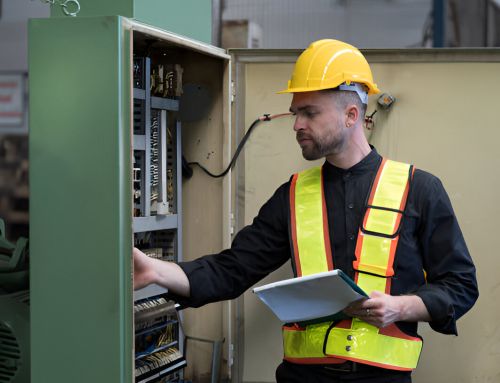
The introduction of mandatory Electrical Installation Condition Reports (EICR) for rental properties in the UK marks a significant shift in regulatory focus towards enhancing electrical safety standards. Since July 2020, landlords have been required to secure EICR certifications every five years or with each change of tenancy, a move aimed at safeguarding tenants from potential electrical hazards. However, the implications of this regulation extend beyond just compliance and tenant safety. As local authorities enforce these rules more stringently, the question arises: how will this affect the broader real estate and property management sectors? Consider the potential ripple effects on property values, insurance policies, and landlord responsibilities. Let’s understand Is Eicr Mandatory?

What is an EICR (Electrical Installation Condition Report)?
An Electrical Installation Condition Report (EICR) is a formal document produced following a thorough inspection and testing of the electrical installations within a property.
The EICR process is designed to ensure that electrical systems and circuits are efficient and safe from any hazards that could potentially cause harm. This report identifies defects, deterioration, damages, or conditions that might lead to high risks, providing detailed recommendations for remedial actions.
The genesis of an EICR involves a series of complex assessments conducted by a certified electrician or approved contractor. These professionals evaluate the safety of the electrical installations against the UK standard for the safety of electrical installations, BS 7671 – Requirements for Electrical Installations (IET Wiring Regulations).
Property owners need to understand that while the EICR process is comprehensive, there are specific EICR exemptions. For instance, new buildings or properties that have undergone recent extensive electrical work may not require an immediate EICR, given that the installations are already certified to meet current standards.
Legal Requirements for EICR in Rental Properties
In the context of rental properties, the legal requirements for obtaining an Electrical Installation Condition Report (EICR) are stipulated by UK law.
Landlords must ensure that their electrical installations are inspected and tested by a qualified person at regular intervals. Failure to comply can result in significant legal consequences.
- Periodic Inspection: The EICR must be performed at least every five years or at the change of tenancy, whichever comes first. This frequency ensures that all electrical installations are maintained in a safe condition over time.
- Mandatory Compliance: All rental accommodations, including houses, flats, and shared housing, are required to have a valid EICR. The only exceptions to this rule are lodger arrangements where the landlord resides in the same property, although obtaining an EICR is still highly recommended for safety.
- Documentation and Records: Landlords must provide a copy of the EICR to existing tenants within 28 days of the inspection and to new tenants before they occupy the premises. Additionally, landlords must retain a copy of the report to produce during any inspection by the local housing authority.
These regulations emphasize the importance of electrical safety in rental properties and protect both tenants and landlords from potential electrical hazards.
Why is EICR Important for Safety?
Given the complexity of electrical systems and the potential hazards they pose, the Electrical Installation Condition Report (EICR) serves as a critical safety measure. The report systematically evaluates the safety of electrical installations, identifying any defects or deviations from the wiring regulations that may compromise safety.

This thorough inspection ensures that electrical systems do not pose a fire hazard or risk of electric shock to occupants, thereby upholding a high standard of electrical safety.
The importance of EICR extends beyond mere regulatory compliance; it is a pivotal element in safeguarding tenant protection. For residential properties, particularly in the rental sector, it reassures tenants that the electrical infrastructure of their homes is secure and functioning correctly.
This not only protects tenants from potential harm but also legally shields property owners from liability in the event of electrical failures leading to accidents or injuries.
Who Needs an EICR and When?
Understanding the significance of the Electrical Installation Condition Report (EICR) underscores the necessity for specific groups to obtain this certification and the appropriate times for its renewal. Central to this discourse are homeowner responsibilities and tenant obligations, which are critical for ensuring compliance with safety standards and regulatory requirements.
- Homeowners: It is incumbent upon homeowners to have an initial EICR conducted upon taking ownership and subsequently at intervals recommended by a qualified electrician, typically every 10 years. This ensures that any deterioration can be addressed promptly to maintain electrical safety and functionality.
- Landlords: For rental properties, landlords must ensure an EICR is carried out before a new tenancy begins and every 5 years thereafter. This is not only a legal requirement but a critical measure in safeguarding tenants and the property from potential electrical hazards.
- Businesses: Commercial entities must also adhere to stringent electrical safety protocols. An EICR should be performed every 5 years or upon significant alterations to the premises, whichever comes first, to mitigate risks associated with outdated or faulty electrical systems.
In each case, the EICR serves as a fundamental tool in the proactive maintenance of electrical installations, aligning with both regulatory frameworks and safety imperatives.
Consequences of Not Having an EICR
While failing to secure an Electrical Installation Condition Report (EICR) might seem inconsequential, the repercussions are both significant and far-reaching.
Primarily, the absence of a valid EICR can lead to stringent financial penalties. Regulatory bodies have set these fines to enforce compliance and ensure safety standards are met. Non-compliance not only reflects poorly on a property owner’s commitment to safety but also attracts legal actions that can culminate in substantial financial losses.
Moreover, property insurance may be directly affected. Insurers often require an up-to-date EICR before agreeing to cover a property. Without this certification, property owners might find themselves either paying significantly higher premiums or facing outright denial of insurance coverage.
This scenario places property owners in a precarious situation, especially in the event of electrical faults leading to accidents or damage. The insurance implications extend beyond mere inconvenience, potentially leading to severe financial strain following uninsured losses.
How to Get an EICR: Steps and Costs
Securing an Electrical Installation Condition Report (EICR) involves several critical steps that property owners must follow to ensure compliance with electrical safety regulations.

This document, essential for verifying the safety of electrical systems, requires a meticulous approach to both the selection of competent EICR providers and understanding the associated costs.
To initiate the process, one must:
- Identify qualified EICR providers: Choose a certified electrician or electrical contractor who specializes in conducting these assessments. Ensure they are approved by relevant regulatory bodies to perform the inspections.
- Schedule an inspection: Contact the selected provider to arrange a suitable time for the inspection. The complexity and size of the electrical installation will dictate the duration of this assessment.
- Review the EICR checklist: Prepare by reviewing the EICR checklist, which outlines all areas and components that will be inspected. This ensures that all parts of the system are accounted for and assessed according to standard regulations.
The cost of obtaining an EICR can vary significantly based on the property’s size, the complexity of the electrical installations, and regional differences in service charges.
It is prudent for property owners to request detailed quotes from several providers to compare and ensure competitive pricing.
Always verify that the provided EICR complies with the latest industry standards and regulatory requirements.
Conclusion
In conclusion, the Electrical Installation Condition Report (EICR) is a crucial regulatory requirement that serves to enhance electrical safety in rental properties across the UK. Compliance with this mandate is essential to avoid substantial fines and legal repercussions. Landlords, homeowners, and business owners must adhere to specified timelines for inspection to ensure tenant safety and maintain the integrity of electrical installations. Thus, the timely execution of EICR is not only a legal obligation but a fundamental safety practice.
Our Pricing
| Our Electrical Safety Certificate Prices |
|---|
| Studio Apartment £67.99 |
| 1 – 3 Bedroom £94.99 |
| 4 Bedroom £104.99 |
| 5 Bedroom £139.99 |
Check Out Our Other Services
| EICR | Commercial EICR | Emergency Light Certificate |
|---|---|---|
| Electrical Diagnostic | PAT Testing | Fuse Box Installation |
About the Author: LandlordCertificate
Related Posts
Get Social
Recent Posts
- Fuse Box Installation: Everything Homeowners Need to Know Before Getting Started
- EICR Certificate London: Understanding Your Legal Duty as an Owner
- Behind the Scenes of a Gas Safety Certificate London Inspection in Homes
- The Role of Fire Alarm Installation in Building Safety
- How Often Should a Fire Risk Assessment Be Reviewed?













